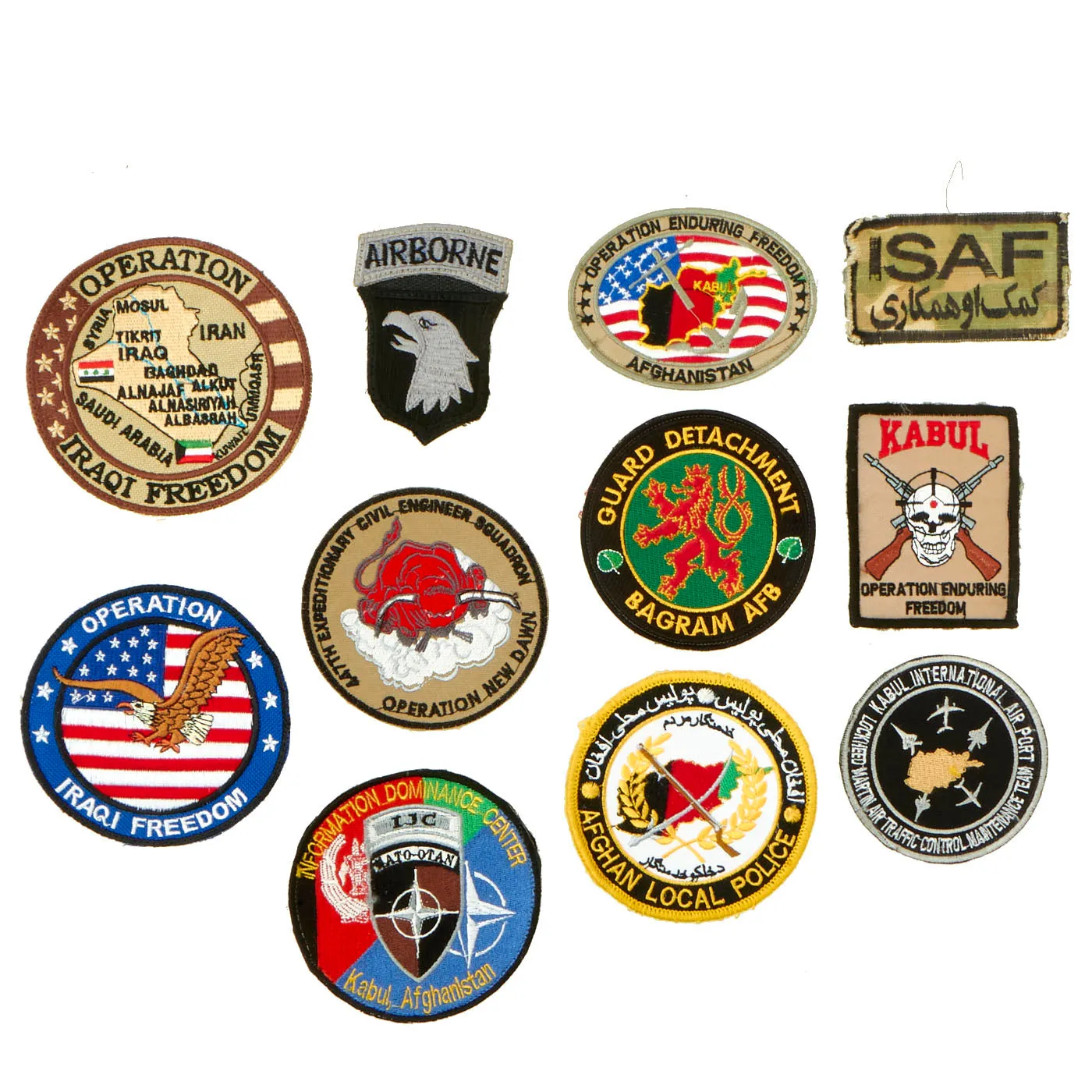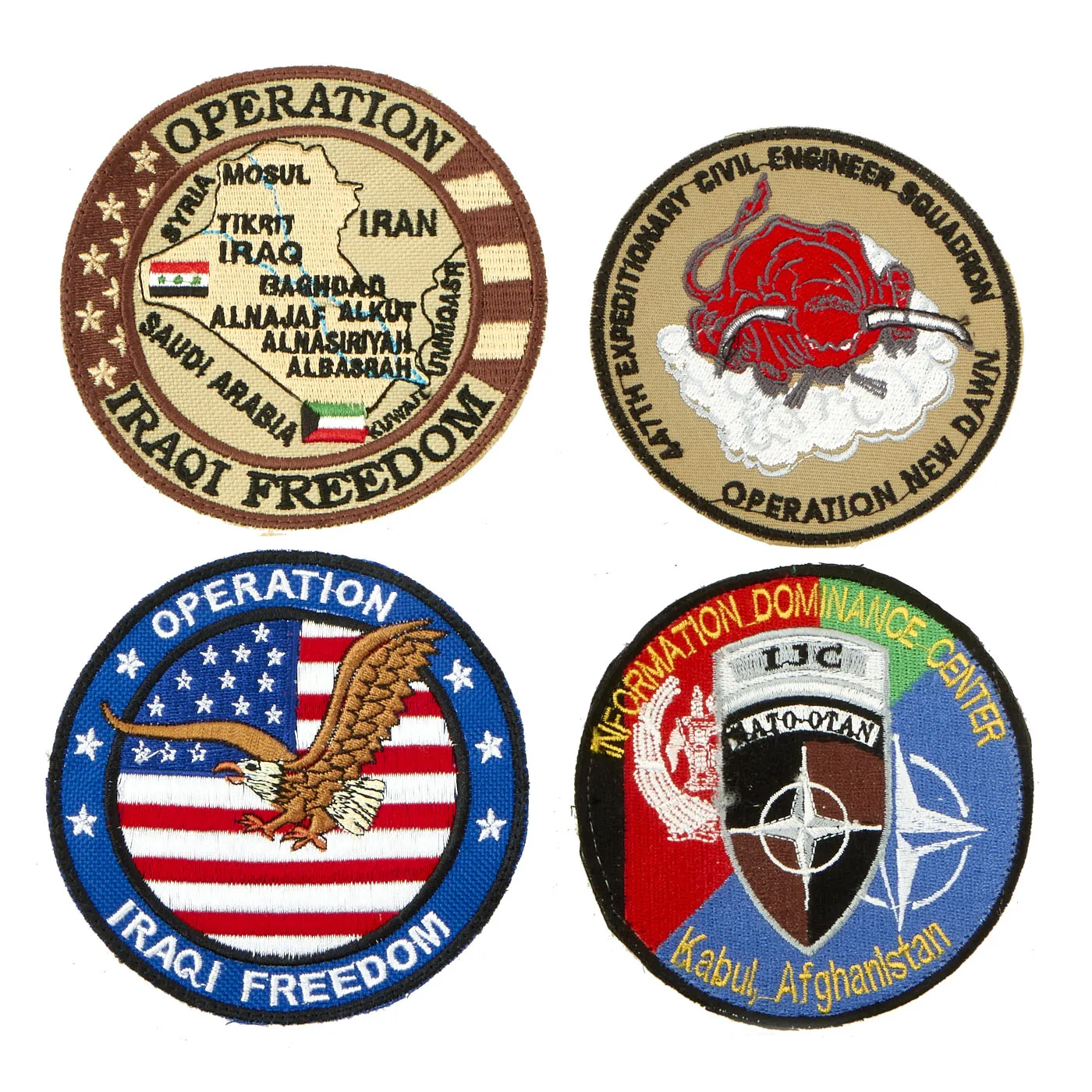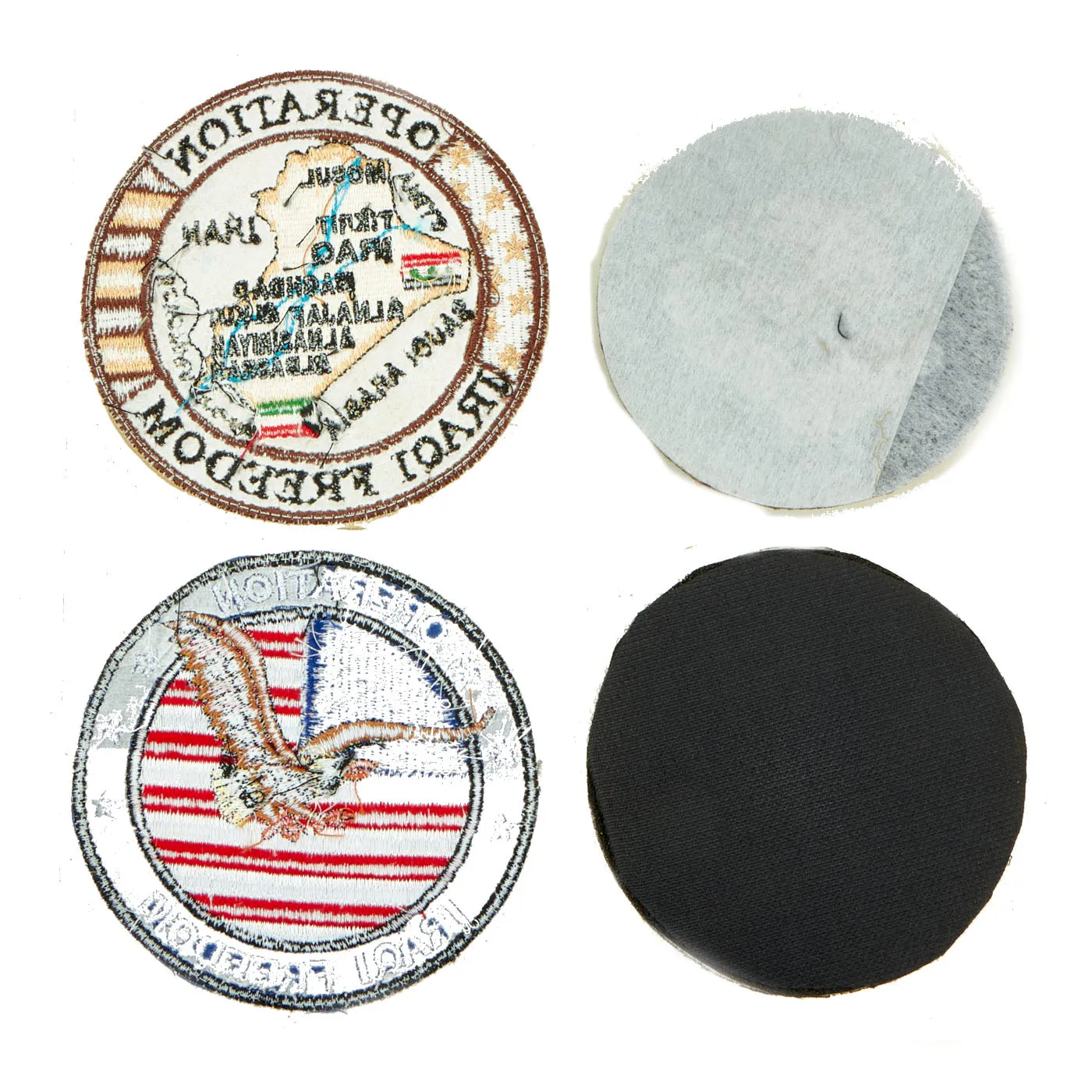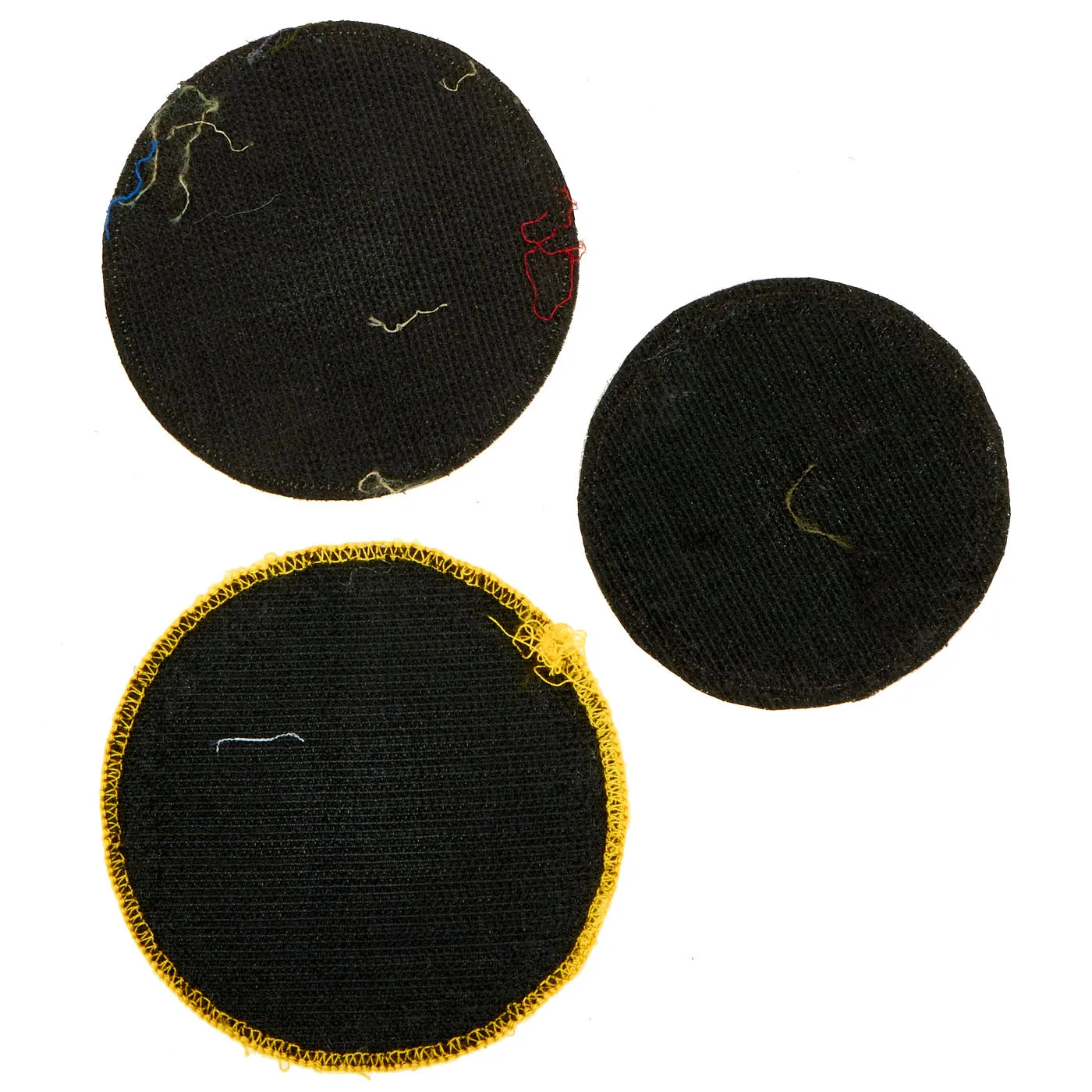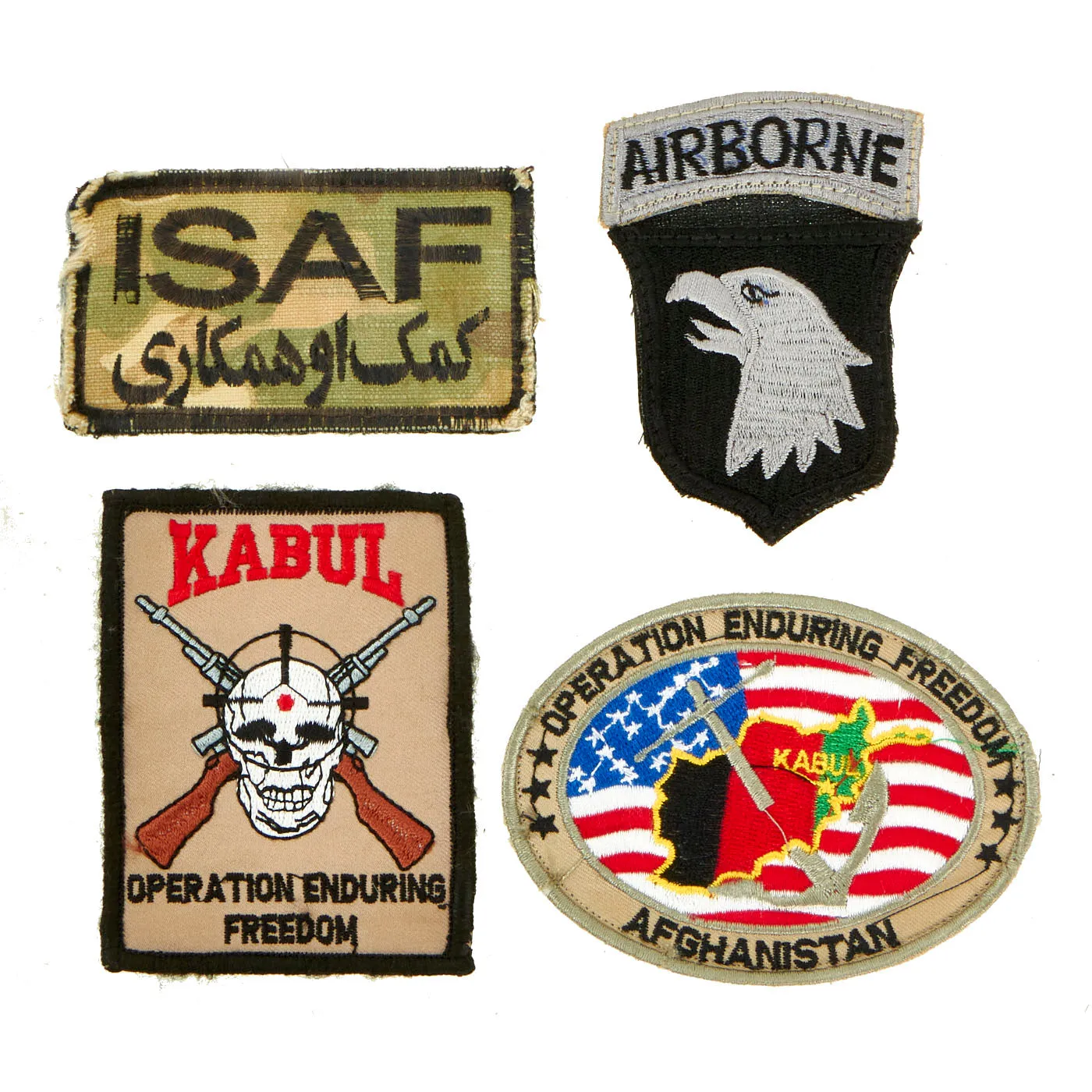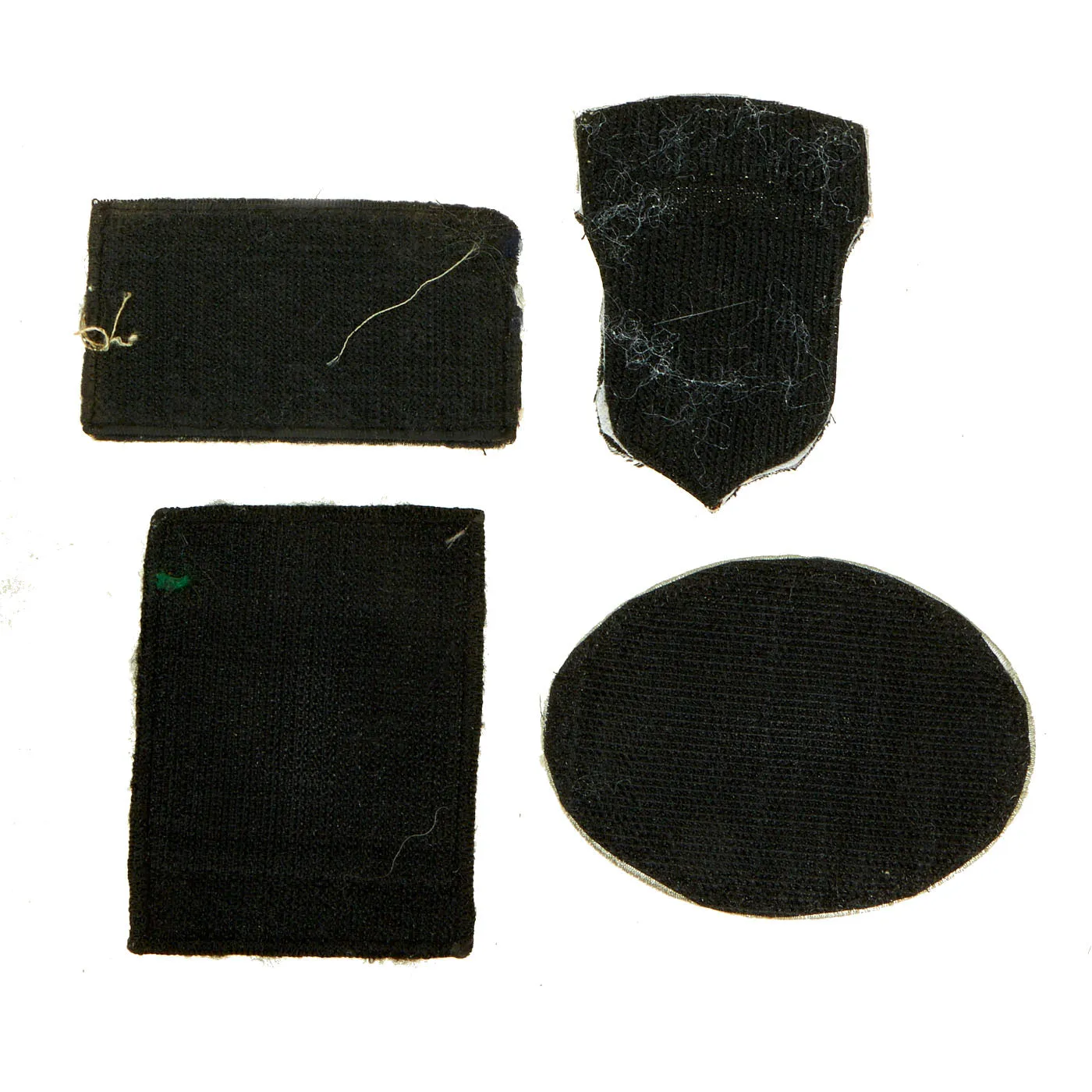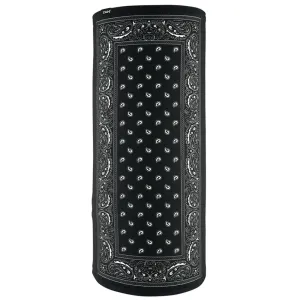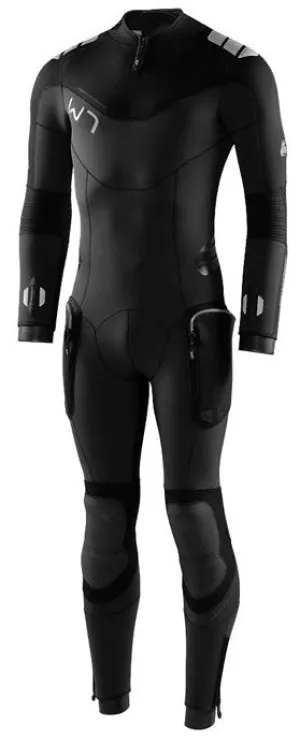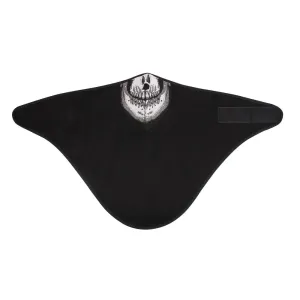Original Items: Only One Lot of 11 Available. Embroidered military patches were first worn in the 1800’s by British soldiers, but were only worn by officers to signify their higher rank. Patches became an effective way to distinguish between divisions in military units, and the idea soon spread to America. Before the Civil War, military uniforms were remarkably unadorned and void of any decoration.
During the Civil War, soldiers from both the Union and Confederate armies wore types of identification on their forage caps, rank stripes on their sleeves and informal patches on their shirts. The Union army tended to have more military patches than the Confederate army, but their wives usually hand sewed patches at home as they were not yet mass-produced. Both Union and Confederate armies had limited patches due to small supplies of cotton and thread, the location of soldiers, and the high cost of materials during the war.
It wasn’t until World War I that General John J. Pershing officially authorized the limited use of military patches on uniforms. During World War I, most of the patches were variations of the Chevron design. The intricate variations of the Chevron design signified rank, division and the skill sets of soldiers. However, the first formal World War I patches were worn by the Army’s 81st Division “Wildcats” in 1918. They were a dull olive felt patch with the silhouette of a wildcat.
By World War II, the military became more organized and produced custom patches that clearly defined a soldier's rank, corps, divisions, and brigades. During WW2 the colors of the patches tended to be much more bright and had specific significance. For example, if a soldier belonged to a division where he operated tanks, he would wear a tank inspired patch. Medics in the Army would wear bright Red Cross embroidered patches to appear more visible on the battlefield. Collecting military patches became so popular during World War II that young children often wrote soldiers asking for them to send their patches in the mail to add to their collection.
During the Vietnam and Gulf War, the patches became much more subdued and harmonious with the colors of the soldier's uniforms. In July 1970, it became mandatory for soldiers to wear their military patches on their field uniforms.
The Patches In This Lot:
- x2 Operation Iraqi Freedom Souvenir Patches: The Iraq War was a protracted armed conflict in Iraq from 2003 to 2011 that began with the invasion of Iraq by the United States–led coalition that overthrew the Iraqi government of Saddam Hussein. The conflict continued for much of the next decade as an insurgency emerged to oppose the coalition forces and the post-invasion Iraqi government. US troops were officially withdrawn in 2011. The United States became re-involved in 2014 at the head of a new coalition, and the insurgency and many dimensions of the armed conflict continue today. The invasion occurred as part of the George W. Bush administration's War on terror following the September 11 attacks.
- ISAF Joint Command Information Dominance Center Kabul, Afghanistan: The International Security Force Assistance (ISAF) Joint Command or IJC was located on the military side of Kabul International Airport; sometimes called North Kabul International Airport. IJC was commanded by a three-star general and all the regional commands reported to him. The commander of IJC, sometimes referred to as COMIJC, reported to the commander of ISAF (a four-star general). IJC was established in November 2009 to serve as NATO's operational headquarters in Afghanistan. At its peak, IJC controlled over 130,000 troops from more than 40 nations across six regional commands.
- USAF Iraq 447th Expeditionary Civil Engineer Squadron Operation New Dawn: On 17 February 2010, US Secretary of Defense Robert Gates announced that as of 1 September, the name "Operation Iraqi Freedom" would be replaced by "Operation New Dawn".
On 18 April, US and Iraqi forces killed Abu Ayyub al-Masri the leader of al-Qaeda in Iraq in a joint American and Iraqi operation near Tikrit, Iraq. The coalition forces believed al-Masri to be wearing a suicide vest and proceeded cautiously. After the lengthy exchange of fire and bombing of the house, the Iraqi troops stormed inside and found two women still alive, one of whom was al-Masri's wife, and four dead men, identified as al-Masri, Abu Abdullah al-Rashid al-Baghdadi, an assistant to al-Masri, and al-Baghdadi's son. A suicide vest was indeed found on al-Masri's corpse, as the Iraqi Army subsequently stated. Iraqi Prime Minister Nouri al-Maliki announced the killings of Abu Omar al-Baghdadi and Abu Ayyub al-Masri at a news conference in Baghdad and showed reporters photographs of their bloody corpses. "The attack was carried out by ground forces which surrounded the house, and also through the use of missiles," Mr Maliki said. "During the operation computers were seized with e-mails and messages to the two biggest terrorists, Osama bin Laden and [his deputy] Ayman al-Zawahiri", Maliki added. US forces commander Gen. Raymond Odierno praised the operation. "The death of these terrorists is potentially the most significant blow to al‑Qaeda in Iraq since the beginning of the insurgency", he said. "There is still work to do but this is a significant step forward in ridding Iraq of terrorists."
- Kabul International Airport Lockheed Martin Air Traffic Control Maintenance Team: Kabul International Airport (known as Hamid Karzai International Airport from 2014 to 2021; IATA: KBL, ICAO: OAKB), also known as Kabul Airport, is located about five kilometers (3 mi) from the center of Kabul in Afghanistan. It is under the Ministry of Transport and Civil Aviation (MoTCA), and serves as one of the nation's main international airports, capable of housing over one hundred aircraft. It was locally re-named as Khwaja Rawash Airport, though it continues to be officially known by some airlines by the latter name. It was given its current name in 2021 by the Taliban.
- Bulgarian Guard Detachment Bagram Air Force Base: Over the course of the war, Bulgaria deployed 608 troops in Afghanistan, as well as medical personnel. Bagram Airfield-BAF, also known as Bagram Air Base. (IATA: OAI, ICAO: OAIX), is located 11 kilometers (6.8 mi) southeast of Charikar in the Parwan Province of Afghanistan. It is under the Afghan Ministry of Defense. Sitting on the site of the ancient Bagram at an elevation of 4,895 feet (1,492 m) above sea level, the air base has two concrete runways. The main one measures 11,819 by 151 feet (3,602 m × 46 m), capable of handling large military aircraft, including the Lockheed Martin C-5 Galaxy. The second runway measures 9,687 by 85 feet (2,953 m × 26 m). The air base also has at least three large hangars, a control tower, numerous support buildings, and various housing areas. There are also more than 13 hectares (32 acres) of ramp space and five aircraft dispersal areas, with over 110 revetments.
Bagram Air Base was formerly the largest U.S. military base in Afghanistan, staffed by the 455th Air Expeditionary Wing of the U.S. Air Force, along with rotating units of the U.S. and coalition forces. It was expanded and modernized by the Americans. There is also a hospital with 50 beds, three operating theaters and a modern dental clinic. Kabul International Airport is located approximately 40 km (25 mi) south of Bagram, connected by two separate roads.
- Operation Enduring Freedom Afghanistan Souvenir Patch: Operation Enduring Freedom (OEF) was the official name used by the U.S. government for the Global War on Terrorism. On 7 October 2001, in response to the September 11 attacks, President George W. Bush announced that airstrikes targeting Al-Qaeda and the Taliban had begun in Afghanistan. Operation Enduring Freedom primarily refers to the War in Afghanistan, but it was also affiliated with counterterrorism operations in other countries, such as OEF-Philippines and OEF-Trans Sahara.
After 13 years, on 28 December 2014, President Barack Obama announced the end of Operation Enduring Freedom in Afghanistan. Subsequent operations in Afghanistan by the United States' military forces, both non-combat and combat, occurred under the name Operation Freedom's Sentinel.
- Kabul “Hunting Club” Operation Enduring Freedom: The patch was more than likely made for a Sniper team.
- ALP Afghan Local Police: Just like the ALP, this patch appears to have never been used. The Afghan Local Police (ALP) was a US-UK sponsored local law enforcement agency, defense force and militia in Afghanistan as part of the Afghan Ministry of Interior Affairs. Formed primarily as a local defense force against Taliban insurgents its members have no power of arrest and are only authorized to investigate crime if requested to do so by the Afghan National Police (ANP). It was established at the request of the International Security Assistance Force (ISAF) in Summer 2010 and is paid for by the United States. Officers undergo three weeks military and police training by ISAF personnel and receive weapons and a uniform. They are intended to defend their villages from insurgent attack and allow the ANP to focus on offensive operations. It was originally intended to function for between two and five years.
- US Army Operational Camouflage Pattern ISAF Patch: The International Security Assistance Force (ISAF) was a multinational military mission in Afghanistan from 2001 to 2014. It was established by United Nations Security Council Resolution 1386 pursuant to the Bonn Agreement, which outlined the establishment of a permanent Afghan government following the U.S. invasion in October 2001. ISAF's primary goal was to train the Afghan National Security Forces (ANSF) and assist Afghanistan in rebuilding key government institutions; it gradually took part in the broader war in Afghanistan against the Taliban insurgency.
- 101st Airborne Division: The 101st Airborne (Air Assault) Division brigade performed counterinsurgency operations within Afghanistan, consisting mostly of raids, ambushes and patrolling. The 101st also performed combat air assaults throughout the operation.
The 2nd Brigade, "Strike", built around the 502d Infantry, was largely deployed to Kosovo on peacekeeping operations, with some elements of 3rd Battalion, 502nd, deploying after 9/11 as a security element in the U.S. CENTCOM AOR with the Fort Campbell-based 5th Special Forces Group. They had been positioned in Jordan providing security for 5th SF Group's exercise prior to 9/11.
The division quickly deployed its 3rd Brigade, the 187th Infantry's Rakkasans, as the first conventional unit to fight as part of Operation Enduring Freedom.
After an intense period of combat in rugged Shoh-I-Khot Mountains of eastern Afghanistan during Operation Anaconda with elements of the 10th Mountain Division, the Rakkasans redeployed to Fort Campbell only to find the 101st awaiting another deployment order. In 2008, the 101st 4th BCT Red and White "Currahee" including the 1st and the 2nd Battalions, 506th Infantry were deployed to Afghanistan. Elements of 1st Battalion, 506th Infantry Regiment participated in joint operations with U.S. Army Special Forces particularly in the Northern province of Kapisa in the outpost Forward Operating Base (FOB) Kutchsbach. Charlie Company, 2nd Battalion, 506th Infantry Regiment performed joint operations with 5th Special Forces Group and 20th Special Forces Group in 2011. The 101st Combat Aviation Brigade deployed to Afghanistan as Task Force Destiny in early 2008 to Bagram Air Base. 159th Combat Aviation Brigade deployed as Task Force Thunder for 12 months in early 2009, and again in early 2011.
In March 2010, the 101st Combat Aviation Brigade deployed again to Afghanistan as Task Force Destiny to Kandahar Airfield to be the aviation asset in southern Afghanistan.
In 2003, Major General David H. Petraeus ("Eagle 6") led the Screaming Eagles to war during the 2003 invasion of Iraq (Operation Iraqi Freedom). General Petraeus led the division into Iraq saying, "Guidons, Guidons. This is Eagle 6. The 101st Airborne Division's next Rendezvous with Destiny is North to Baghdad. Op-Ord Desert Eagle 2 is now in effect. Godspeed. Air Assault. Out."
The division was in V Corps, providing support to the 3rd Infantry Division by clearing Iraqi strongpoints which that division had bypassed. 3rd Battalion, 187th Infantry (3rd Brigade) was attached to 3rd Infantry Division and was the main effort in clearing Saddam International Airport. The division then served as part of the occupation forces of Iraq, using the city of Mosul as their primary base of operations. 1st and 2d Battalion, 327th Infantry Regiment (1st Brigade) oversaw the remote airfield Qayarrah West 30 miles (48 km) south of Mosul. The 502d Infantry Regiment (2d Brigade) and 3d Battalion, 327th Infantry Regiment were responsible for Mosul itself while the 187th Infantry Regiment (3d Brigade) controlled Tal Afar just west of Mosul. The 101st Airborne also participated in the Battle of Karbala. The city had been bypassed during the advance on Baghdad, leaving American units to clear it in two days of street fighting against Iraqi irregular forces. The 101st Airborne was supported by the 2nd Battalion, 70th Armor Regiment with Charlie Company, 1st Battalion, 41st Infantry Regiment, 1st Armored Division. The 3d Battalion, 502d Infantry Regiment, 101st Airborne Division was awarded a Valorous Unit Award for their combat performance.
On the afternoon of 22 July 2003, troops of the 101st Airborne 3/327th Infantry HQ and C-Company, aided by U.S. Special Forces killed Qusay Hussein, his 14-year-old son Mustapha, and his older brother Uday, during a raid on a home in the northern Iraqi city of Mosul. After Task Force 121 members were wounded, the 3/327th Infantry surrounded and fired on the house with a TOW missile, Mark 19 Automatic Grenade Launcher, M2 50 Caliber Machine guns and small arms. After about four hours of battle (the whole operation lasted 6 hours), the soldiers entered the house and found four dead, including the two brothers and their bodyguard. There were reports that Qusay's 14-year-old son Mustapha was the fourth body found. Brig. Gen. Frank Helmick, the assistant commander of 101st Airborne, commented that all occupants of the house died during the fierce gun battle before U.S. troops entered.
Once replaced by the first operational Stryker Brigade, the 101st was withdrawn in early 2004 for rest and refit. As part of the Army's modular transformation, the existing infantry brigades, artillery brigade, and aviation brigades were transformed. The Army also activated the 4th Brigade Combat Team, which includes the 1st and 2nd Battalions, 506th Infantry Regiment and subordinate units. Both battalions were part of the 101st in Vietnam but saw their colors inactivated during an Army-wide reflagging of combat battalions in the 1980s.
As of December 2007, 143 members of the division have died while on service in Iraq.
Military Patches have now become very popular inside the branches of the military. The historical symbolism of each patch has created an active collectors market inside and outside the military, especially for rare, limited-production patches. These different patches have now become an important part of military history!
All are in great condition with most of them remaining unused. Comes more than ready for display!




